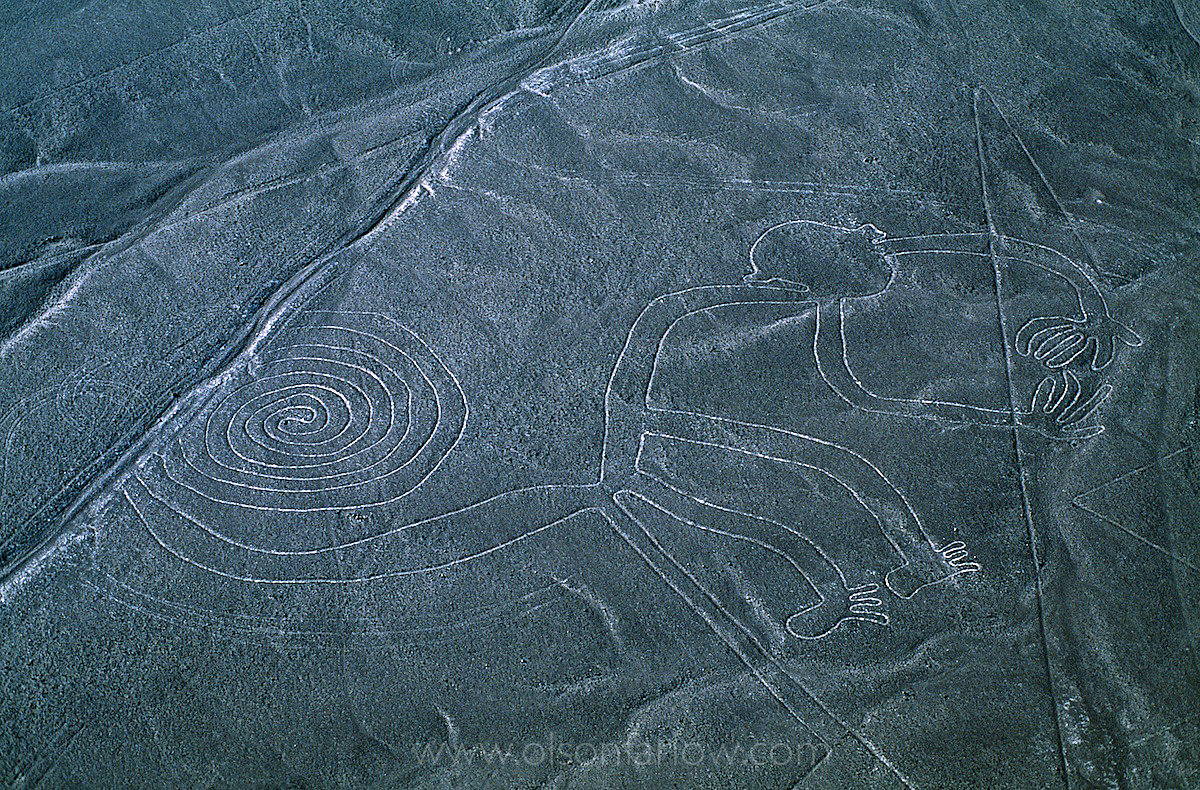Pan-American Highway, National Geographic Book: Nazca Line Monkey

The Nazca Lines are a series of ancient geoglyphs located in the Nazca Desert in southern Peru. Pampas de Jumana, a monkey figure, appears in an aerial photograph as the lines are only visible from the air. Besides, lizards, spiders, hummingbirds, llamas and other animal’s shapes, there are geometric shapes that measure up 200 meters long. The most popular explanation about the origin of the lines are that they were made by the Nazca and Paracas cultures during the period between 900 BC and 600 AD. Maria Reiche, a German mathematician who spent much of her life studying the lines considers them to be an astronomical calendar for agricultural purposes. The formations were made by lighter colored soil being exposed to light when sun-baked stones were piled. The stable climate is dry and windless as well are remote, which has helped preserve the lines. The landscape is mostly flat, desert-like and barren when viewed at ground level.